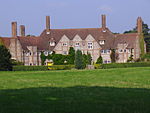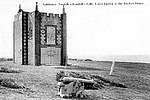RAF Weybourne
Commons category link is locally definedRoyal Air Force stations in NorfolkRoyal Air Force stations of World War II in the United KingdomUse British English from May 2013

RAF Weybourne was a Second World War anti-aircraft establishment. 'X' Flt, No 1 Anti-Aircraft Co-operation Unit were based at the station between 16 May and 14 September 1939, with 'T' Flt, No 1 Anti-Aircraft Co-operation Unit there between 25 February and 29 April 1942. No 6 Anti-Aircraft Co-operation Unit were based there between 7 December 1942 and 30 November 1943.Associated with the anti-aircraft gunnery, the station operated the de Havilland DH-82B Queen Bee target drone aircraft, a radio-controlled target tug version of the Tiger Moth II.
Excerpt from the Wikipedia article RAF Weybourne (License: CC BY-SA 3.0, Authors, Images).RAF Weybourne
Weybourne Road, North Norfolk
Geographical coordinates (GPS) Address Nearby Places Show on map
Geographical coordinates (GPS)
| Latitude | Longitude |
|---|---|
| N 52.9505 ° | E 1.1215 ° |
Address
Weybourne Atmospheric Observatory
Weybourne Road
NR25 7EG North Norfolk
England, United Kingdom
Open on Google Maps










